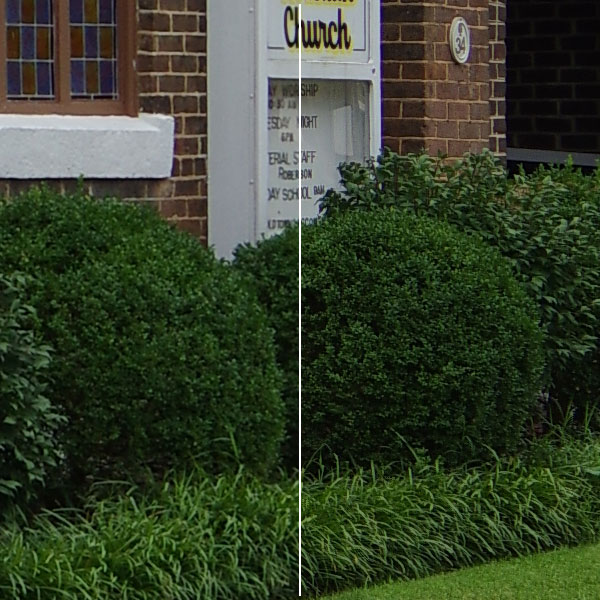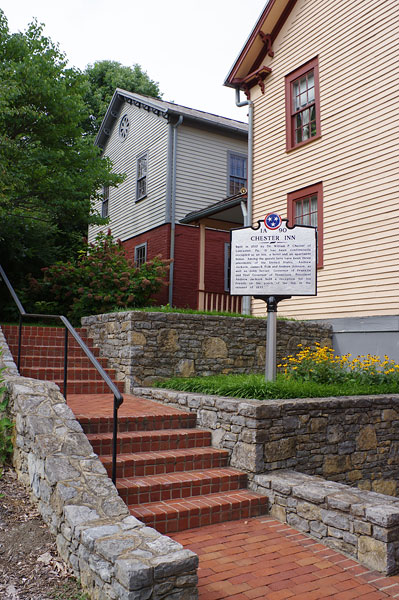Pentax K-3 II gallery: Pixel Shift Resolution goes head-to-head in the real world!
posted Tuesday, July 14, 2015 at 2:03 AM EST

Shortly after Ricoh's enthusiast-grade Pentax K-3 II DSLR hit our lab a month or so back, I took readers on a journey of geektastic delight with an in-depth look at Pixel Shift Resolution, one of its landmark new features. Yesterday, I took it with me to the historic town of Jonesborough, Tennessee's oldest city, to see how it stacks up in the real world!
Ricoh's Pixel Shift Resolution technology promises to take per-pixel image quality to the next level, at least if your subject is completely static, and at the very end of May, I first put the claims to the test. Poring over dozens upon dozens of carefully-captured lab samples, I compared the multi-shot function against the Pentax K-3 II's standard single-shot mode and Olympus' competing High Resolution mode, not to mention imagery shot with the full-frame Nikon D810 and medium-format Pentax 645Z. The results were incredibly impressive, and spurred a whole lot of discussion and excitement in our comments section. (Not seen the article? You'll want to take a look at my Pixel Shift Resolution analysis before you go any further, so you can get a feel for what to expect from the mode, and what its drawbacks are.)

But well-controlled lab tests are one thing, and the great big, messy world we live in another entirely, so what I've really been itching to do is to get the Pentax K-3 II out and about, so I could see what Pixel Shift Resolution can bring to the table when my subject can't be managed to perfection. And now that the lab testing is completed, I've done so! Over an afternoon's shooting in Jonesborough, I shot not only a healthy and colorful selection of real-world samples in single-shot mode, but also a raft of side-by-side comparisons of standard shots against Pixel Shift Resolution versions. Among their number, you can see examples of how the technology responds in the face of subtly-moving foliage, rapidly-waving flags and even a person or two.

To be sure to give the feature a fighting chance, I shot not only with my personal copy of Ricoh's smc Pentax-DA 18-135mm F3.5-5.6 ED AL [IF] DC WR, a versatile and far-ranging weather-sealed zoom that many advanced amateurs and enthusiasts would likely opt for, but also my copies of the smc Pentax DA 21mm F3.2 AL Limited and smc Pentax DA 40mm F2.8 Limited, two superb pancake primes that are both well-known as very sharp lenses. For most of my shots, I also let the K-3 II pick its own setup in its MTF program line, in effect telling it to choose the aperture it felt would yield the sharpest result.

I'll have some detailed analysis of these images and my thoughts on how Pixel Shift Resolution handles the real world in the first part of my upcoming field test -- watch this space for more soon! In the meantime, you can download images straight from the camera in both DNG raw and JPEG formats that should let you draw your own conclusions. Hop on over to my just-posted Pentax K-3 II gallery now, and let the pixel-peeping commence!

Some Important Notes: You can tell the Pixel Shift Resolution images from their single-shot equivalents because I've appended "-psr" to their filenames. I've also included one JPEG of an image shot in Pixel Shift Resolution mode, but then converted from the raw in-camera with Pixel Shift Resolution disabled.
And it's important to consider that at upwards of 110MB apiece, the DNG raw files shot in Pixel Shift Resolution mode may put a strain on your bandwidth. They also can't be properly opened by software from the likes of Adobe or DxO Labs at this time. They'll likely be rendered by these and most other applications as a single-shot file. You'll need a current version of the Silkypix-based Pentax Digital Camera Utility 5 software provided by Ricoh (but not Silkypix itself, which doesn't currently support the mode), the Macintosh-only Iridient Developer 3.0.3 or an unofficially-modified version of Dave Coffin's dcraw utility to open the Pixel Shift Resolution DNGs properly.
If you have an existing, pre-version 5.4.1 release of Digital Camera Utility 5, you can update it to include Pentax K-3 II support using the downloads for Windows or Mac OS on this page. Know of any other apps that can handle DNG-format Pixel Shift Resolution imagery properly? Sound off in the comments below, and help guide your fellow readers in the right direction!
